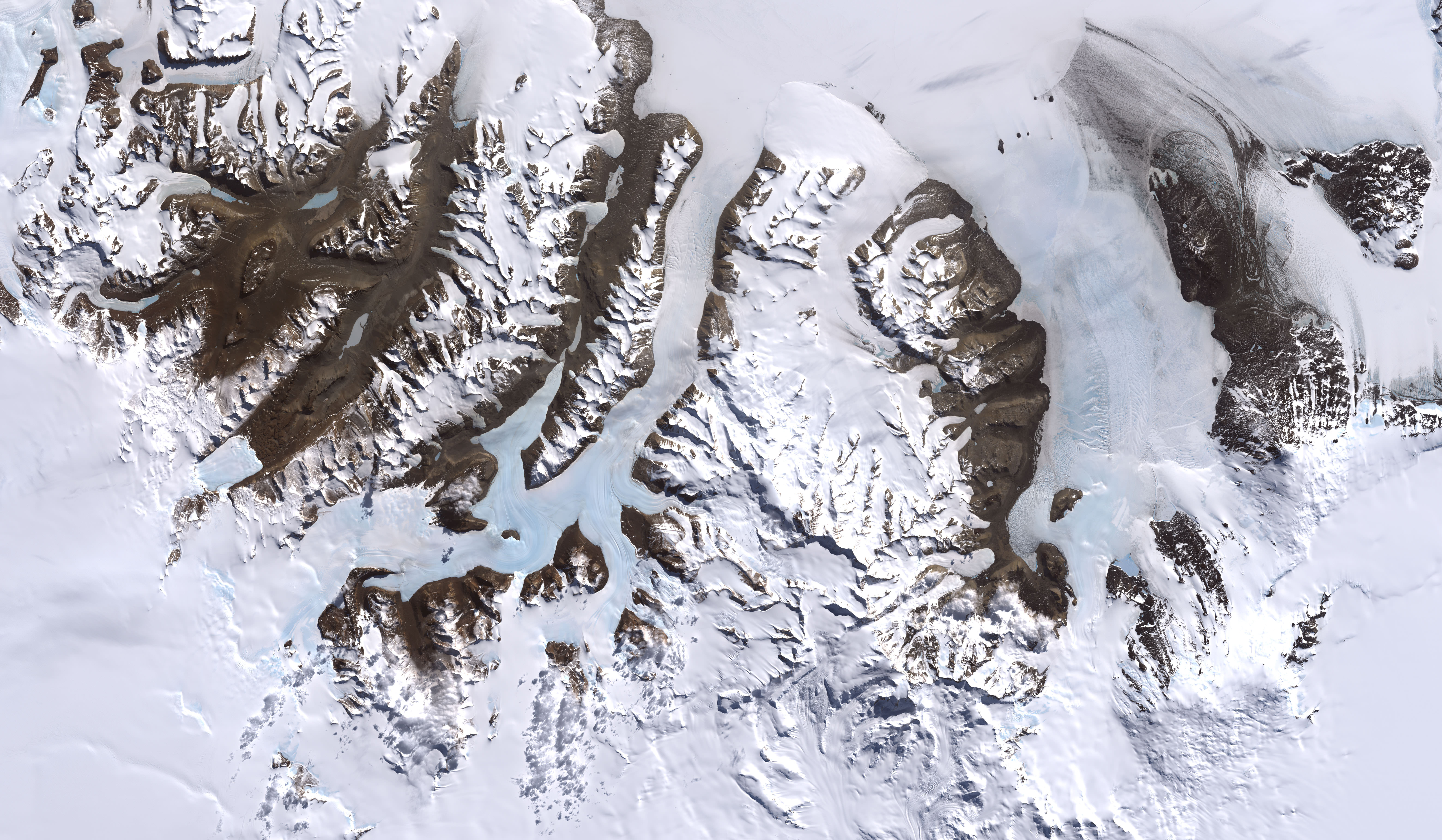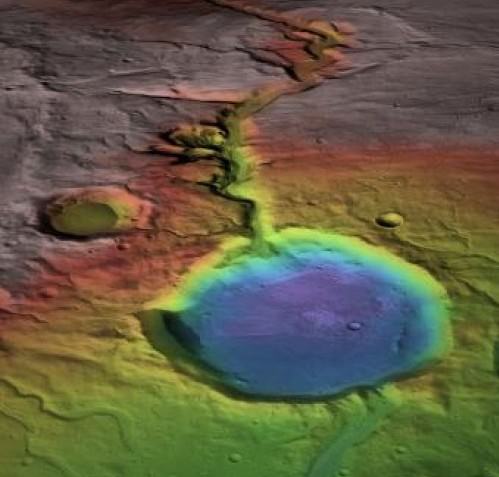Though the surface of Mars is a dry, dessicated and bitterly cold place today, it is strongly believed that the planet once had rivers, streams, lakes, and flowing water on its surface. Thanks to a combination of spacecraft imagery, remote sensing techniques and surface investigations from landers and rovers, ample evidence has been assembled to support this theory.
However, it is hard to reconcile this view with the latest climate models of Mars which suggest that it should have been a perennially cold and icy place. But according to a new study, the presence of warm, flowing water may have been an episodic occurrence, something that happened for decades or centuries when the planet was warmed sufficiently by volcanic eruptions and greenhouse gases.
The study, which was conducted by scientists from Brown University and Israel’s Weizmann Institute of Science, suggests that warmth and water flow on ancient Mars were probably episodic, related to brief periods of volcanic activity that spewed tons of greenhouse-inducing sulfur dioxide gas into the atmosphere.
The work combines the effect of volcanism with the latest climate models of early Mars and suggests that periods of temperatures warm enough for water to flow likely lasted for only tens or hundreds of years at a time.
The notion that Mars had surface water predates the space age by centuries. Long before Percival Lowell observed what he thought were “canals” on the Martian surface in 1877, the polar ice caps and dark spots on the surface were being observed by astronomers who thought that they were indications of liquid water.

But with all that’s been learned about Mars in recent years, the mystery of the planet’s ancient water has only deepened. The latest generation of climate models for early Mars suggests that the atmosphere was too thin to heat the planet enough for water to flow. Billions of years ago, the sun was also much dimmer than it is today, which further complicates this picture of a warmer early Mars.
“These new climate models that predict a cold and ice-covered world have been difficult to reconcile with the abundant evidence that water flowed across the surface to form streams and lakes,” said James W. Head, professor of earth, environmental and planetary sciences at Brown University and co-author of the new paper with Weizmann’s Itay Halevy. “This new analysis provides a mechanism for episodic periods of heating and melting of snow and ice that could have each lasted decades to centuries.”
Halevy and Head explored the idea that heating may have been linked to periodic volcanism. Many of the geological features that suggest water was flowing on the Martian surface have been dated to 3.7 billion years ago, a time when massive volcanoes are thought to have been active.
And whereas on Earth, widespread volcanism has often led to global dimming rather than warming – on account of sulfuric acid particles reflecting the sun’s rays – Head and Halevy think the effects may have been different in Mars’ dusty atmosphere.
To test this theory, they created a model of how sulfuric acid might react with the widespread dust in the Martian atmosphere. The work suggests that those sulfuric acid particles would have glommed onto dust particles and reduced their ability to reflect the sun’s rays. Meanwhile, sulfur dioxide gas would have produced enough greenhouse effect to warm the Martian equatorial region so that water could flow.

Head has been doing fieldwork for years in Antarctica and thinks the climate on early Mars may have been very similar to what he has observed in the cold, desert-like.
“The average yearly temperature in the Antarctic Dry Valleys is way below freezing, but peak summer daytime temperatures can exceed the melting point of water, forming transient streams, which then refreeze,” Head said. “In a similar manner, we find that volcanism can bring the temperature on early Mars above the melting point for decades to centuries, causing episodic periods of stream and lake formation.”
As that early active volcanism on Mars ceased, so did the possibility of warmer temperatures and flowing water.
According to Head, this theory might also help in the ongoing search for signs that Mars once hosted life. If it ever did exist, this new research may offer clues as to where the fossilized remnants ended up.
“Life in Antarctica, in the form of algal mats, is very resistant to extremely cold and dry conditions and simply waits for the episodic infusion of water to ‘bloom’ and develop,” he said. “Thus, the ancient and currently dry and barren river and lake floors on Mars may harbor the remnants of similar primitive life, if it ever occurred on Mars.”
The research was published in Nature Geoscience.
Further Reading: Brown University


Wouldn’t it be ‘funny’ if we eventually find evidence that an asteroid did in fact hit Mars at some time within the last 10,000 years or so and Percival Lowell DID see water filled “canals” on the Martian surface in 1877!
Personally, I believe the ‘canali’ may have been the tracks made from swept up dust and soils (Albedo effects) shortly after a planet wide dust storm?
Episodic melting due to asteroid impact a factor? Hmm… not if but when?
It’s not totally farfetched. What if the volcanic activity can be attributed to an asteroid hitting the planet? I have heard this same argument made for the extinction of the dinosaurs…
I’ll go even further? The “can’t simply be chance” alignment that the Hellas Planetia depression/impact basin has in relation to the Valles Marineris, the 3 shield volcanoes, then Olympus Mons is beyond mere co-incidence? An impactor that penetrated the crust and pulverized the surface above the antipode of the low angled impact? Imagine the heat generated?
http://www.google.com/mars/
Aqua4U: I’ve noticed the tectonic slide from Valles Marineris to the Thaumasia mountain range before, but it looks to be unique in Martian history and shows no sign of local impact as cause, so it’s been puzzling. Lining that up with Hellas Planetia on the opposite side of the planet is an amazing explanation that makes a lot of sense! The impact that caused the volcanism on the one side of the planet may have in fact come from the opposite side! Can you imagine what a jolt that would have been? The surface of Solis Planum seems to have ripples on it too, and the impact heating of that region would explain how the entire region could have become molten for a time-limited catastrophic event.
If what they theorize is true, it is highly unlikely they will ever find any signs of life on Mars . . . . something they have been hoping to do . . . . I do not think they will, if they have not found it by now.